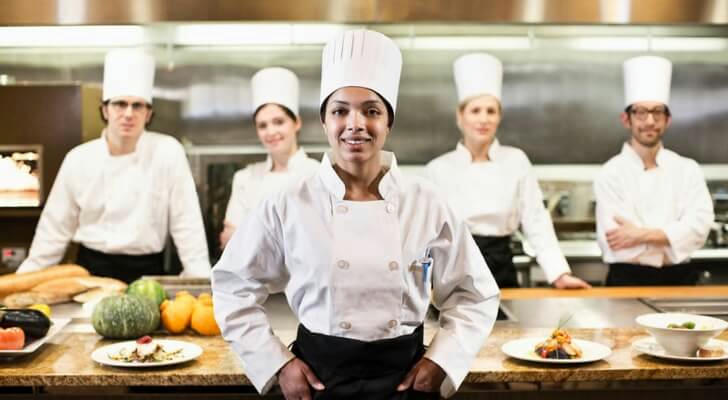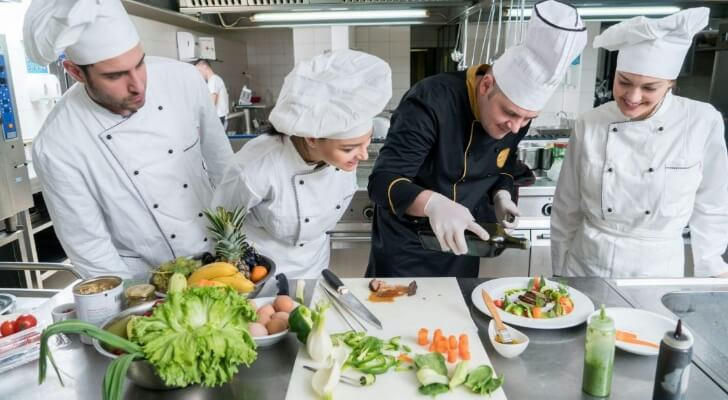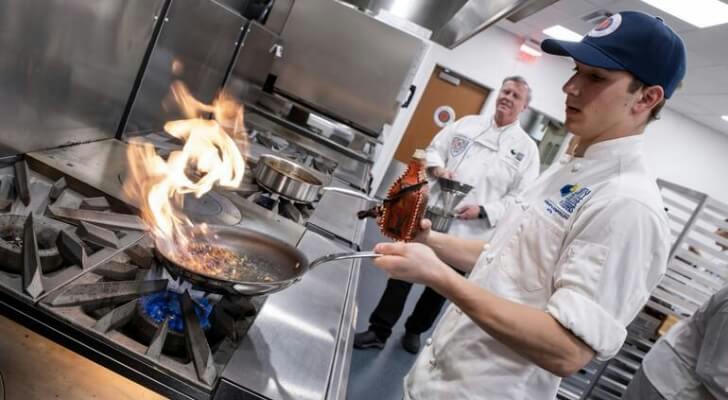The World of Chefs: From Home Cooking to the Michelin Journey
Cooking is more than a daily routine—it’s a cultural tradition and a form of emotional expression. From humble home kitchens to world-class restaurants, chefs are storytellers who use food to convey warmth, creativity, and technical mastery.
For many middle-aged and older women, years of cooking for family provide a solid foundation to pursue culinary arts professionally. Learning to cook can spark personal transformation, enhance health awareness, and even launch a new career.

The World of Chefs: From Home Cooking to the Michelin Journey
Cooking is more than a daily routine—it’s a cultural tradition and a form of emotional expression. From humble home kitchens to world-class restaurants, chefs are storytellers who use food to convey warmth, creativity, and technical mastery.
For many middle-aged and older women, years of cooking for family provide a solid foundation to pursue culinary arts professionally. Learning to cook can spark personal transformation, enhance health awareness, and even launch a new career.
What Is a Culinary Certification Course?
A culinary certification course is a structured training program that teaches professional cooking techniques, nutrition principles, and kitchen operations.
Core Components:
✔ Theoretical Knowledge – Food groups, cooking science, flavor principles
✔ Cuisine Practice – Dish preparation from various cuisines
✔ Hands-On Training – Real-world kitchen exercises for speed and precision
In many regions, official certification is required to work in professional kitchens or operate a food business legally.
Why Learn Culinary Skills?
1. Unlock Career Opportunities
The hospitality industry is growing rapidly. According to the World Travel & Tourism Council, the global restaurant and food service industry is expected to contribute over $10 trillion to the global economy by 2033.
Certified chefs can find work in:
Hotels & fine dining
Catering & events
Private chef services
Food startups or cloud kitchens
2. Improve Personal Health & Food Awareness
Learning how to cook healthily helps you:
Control sugar, salt, and fat intake
Address specific health needs (e.g. diabetes, hypertension)
Reduce reliance on processed foods
A study by the Harvard School of Public Health found that adults who prepare home-cooked meals at least five times per week are 28% less likely to be overweight.
3. Reignite Creativity and Emotional Fulfillment
Culinary arts offer a unique way to connect with tradition and express individuality. For women re-entering the workforce or seeking emotional renewal, cooking is both practical and healing.
According to Food & Society Journal, midlife learners in culinary programs reported improved mood, sense of identity, and cultural belonging.

What's Included in the Course?
1. Culinary Basics & Kitchen Operations
Knife techniques
Ingredient recognition & storage
Sanitation & food safety rules
2. Regional and International Cuisine
Chinese Eight Great Cuisines
Italian, French, and Japanese classics
Fusion recipes and plating design
3. Nutrition & Meal Planning
Age-specific nutrition planning
Special diets (gluten-free, low-carb, vegetarian)
Balanced menu building
4. Restaurant Operations & Ethics
Team leadership & communication
Customer service etiquette
Budget control & kitchen logistics
📊 The International Federation for Hospitality Education (IFHE) reports a 48% higher job placement rate for students who complete certified culinary programs.

A Case in Point: Mei’s Midlife Reinvention
At age 52, Mei, a retired office manager from Kuala Lumpur, enrolled in a culinary certification course to explore her long-standing passion for cooking. After graduating, she launched a home-based healthy meal delivery service tailored to seniors with dietary restrictions.
"I thought I was too old to start over. Turns out, my experience was my greatest strength."
Her story is a reminder that with the right guidance, culinary education can open doors at any age.
Are There Any Downsides?
While culinary training is rewarding, it also comes with challenges:
Time & Cost: Some courses require a significant time and financial investment.
Physical Demands: Working in a kitchen involves long hours and physical stamina.
Certification Recognition: Not all certifications are recognized internationally—be sure to choose accredited programs.
Balancing passion with practicality is key when deciding whether to pursue this path.
Who Should Learn Culinary Arts?
Ideal candidates include those who:
✔ Are curious about food culture
✔ Enjoy hands-on learning
✔ Want to turn a hobby into a profession
✔ Seek practical skills for everyday life
Middle-aged and older women, in particular, bring:
Strong organizational habits
Nutritional awareness
Patience and consistency
These are invaluable traits in the kitchen, both at home and professionally.
How to Get Started
✅ Read Culinary Books – e.g., The Flavor Bible, On Food and Cooking
✅ Take Community Classes – Affordable and beginner-friendly
✅ Enroll in Accredited Programs – Gain professional recognition
✅ Join Food Events or Online Groups – Connect with mentors and peers
Final Thoughts
Culinary education is not just about becoming a chef—it’s about reclaiming joy, embracing lifelong learning, and exploring new possibilities.
🌍 As the UN Food and Agriculture Organization (FAO) reports, the demand for nutritious, high-quality food is growing worldwide—bringing new attention to skilled, passionate culinary professionals.
No matter your age, it’s never too late to create something delicious—for your plate, your health, and your future.
💡 With skilled hands and a passionate heart, every stage of life can be seasoned to perfection.
